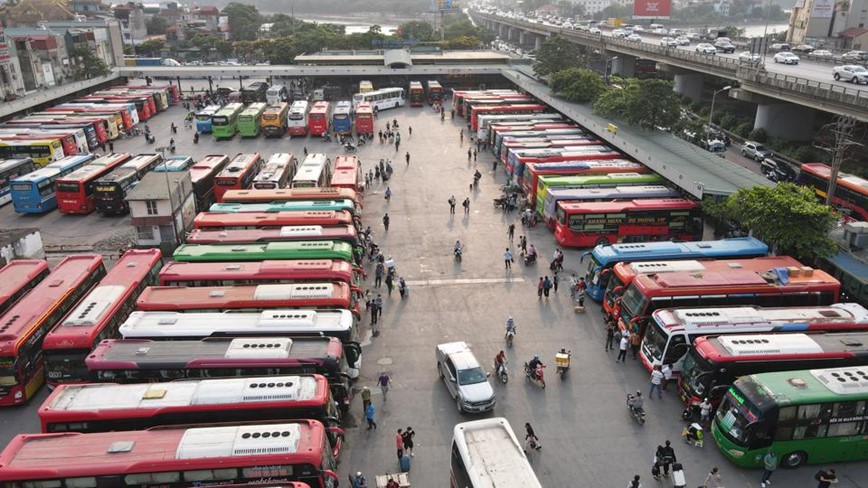
Bus stations are a crucial factor in passenger choice and play an important role in enabling interprovincial buses to compete with other rapidly growing transportation options.
| My Dinh Bus Station. Photo: The Hanoi Times |
Now more than ever, interprovincial buses are facing significant challenges and difficulties. Passenger numbers have declined, and the market share has been fragmented by competition from airlines and rail services, especially with the fierce competition posed by unlicensed buses, shared rides, and convenient transport services.
Among the various reasons for the decline in interprovincial bus use, issues related to the service are prominent. A large proportion of passengers are unwilling to visit bus stations due to concerns about aggressive solicitation, disorder, and lack of cleanliness, as well as difficulties in getting to the stations from their homes.
Over the years, with continuous investment and efforts from management, major bus stations in Hanoi, such as Giap Bat, My Dinh, and Nuoc Ngam, have seen noticeable improvements in service quality. However, the causes of passengers' reluctance to use interprovincial buses have not been fully addressed.
Bus stations should be recognized for two distinct roles: first, as hubs that attract passengers and provide the best services, ensuring peace of mind when considering interprovincial bus travel; and second, as essential tools for managing interprovincial bus operations, maintaining order in passenger transport, and contributing to road safety in the city.
What major bus stations in Hanoi currently lack is a standard to establish their brand identity, which would instill confidence in passengers. For instance, when it comes to urban rail or electric buses, people immediately feel positive and inclined to use these services due to their undeniable quality.
Bus stations, on the other hand, often raise concerns about safety and comfort. While Hanoi has five major bus stations, there is no clear standard for what constitutes a good bus station; it's unclear which ones offer better quality and which need further improvement.
In order to revive interprovincial buses, it is essential to prioritize service quality, with a particular focus on enhancing the quality of bus stations. Suppose the negative perception of bus stations can be changed. In that case, both the bus stations in Hanoi and the interprovincial bus system will be able to attract more passengers and gain a competitive advantage in the current fierce market.
Hanoi must first establish a strong brand identity for these transport hubs to change the public perceptions of interprovincial buses and bus stations. The city should establish a set of criteria as a basis for developing high-quality bus stations. A bus station recognized as “high quality” will assure passengers of a reliable service.
A high-quality bus station should meet three main criteria: safety, convenient connectivity, and environmental hygiene. The degree to which these criteria are met should be evaluated and monitored by the authorities, to ensure that it aligns with the “high quality” brand.
For instance, regarding safety, current bus stations in Hanoi generally meet public expectations, with incidents of pickpocketing, aggressive solicitation, and fraudulent boarding have significantly decreased.
However, there are still issues in some places, such as motorcycle taxis and regular taxis crowding the entrances and entering waiting areas to solicit passengers, which can be confusing for many travelers. In some cases, safety measures may be effective but not sufficiently communicated to the public.
If there were a recognized safety standard for high-quality bus stations, issued by authorities, it would alleviate long-standing public concerns. Consequently, a safety-focused bus station brand would be established in the minds of the citizens.
Similarly, the connectivity criteria at high-quality bus stations are critical to changing passenger perceptions. A high-quality bus station must provide excellent connections, both in terms of routes and through online search methods.
A bus station can only be considered high quality if passengers can easily find the interprovincial routes they want to take and can book tickets directly on their smart devices. The station should have a shuttle service for passengers or provide specific online route information, allowing them to simply click, board the vehicle, arrive at the station, and then continue their interprovincial journey.
Once the criteria for high-quality bus stations have been established, all bus stations will naturally be motivated to strive for these standards, thereby increasing their competitiveness and attracting more customers, to the benefit of both the public and the transportation businesses.







